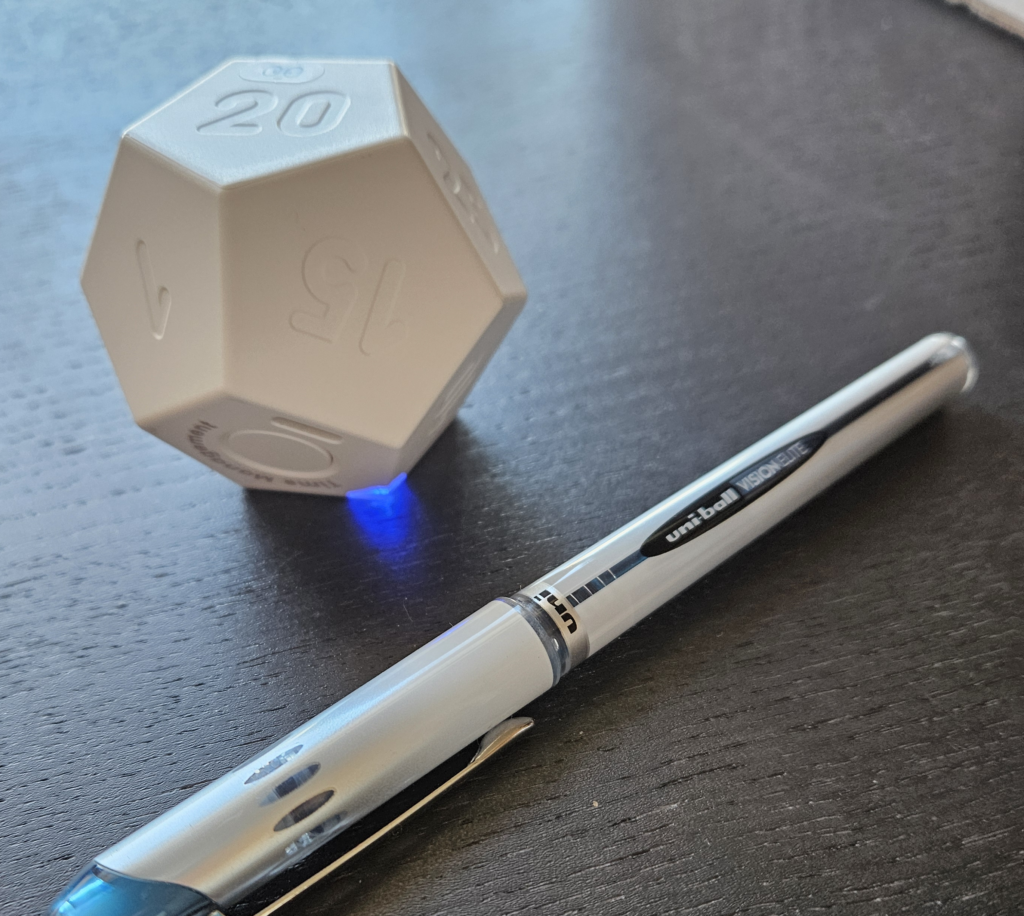A strategy for actually implementing the 20-20-20 rule to reduce eye strain
I am spending so much time looking at my computer screen these days that I was really feeling it in my eyes. Eye strain is real. My eyes were feeling tired and achy. I’ve known how to prevent eye strain for years, but I’ve never needed it.
The 20-20-20 rule is straightforward. Every 20 minutes, look at least 20 feet away for at least 20 seconds. Easy peasy. I have a big window in my home office, so it’s easy to look 20+ feet away. I can count to 20, so I had the 20 seconds covered. Now, how best to remind myself to do this every 20 minutes?
I needed a timer of some sort. I first tried setting the alarm on my phone. The alarm would go off—so far so good—and I’d pick up my phone to turn off the alarm. “Oh, a couple text messages. Here let me do some quick replies.” A half hour later and I was still texting. Okay, a phone alarm is not going to work.
What about a web browser extension? There are certainly plenty of those, but I didn’t even bother trying one. I usually have my computer speakers on mute; I wouldn’t even hear it. I also work in both Firefox and Chrome and plenty of my work is in my email app, Word, and Excel. Having an alarm sound (if my volume was up) while trying to find Chrome or Firefox just felt much too annoying.
And then I discovered flip timers. The one I chose (pictured below) was the KADAMS Pomodoro Timer (Amazon). I didn’t choose this particular one because it has 12 sides; I chose it because it has a 20-minute option.
The operation of the timer could not be simpler. To turn the timer on, press and hold the button. In the photo, the button can be seen at the bottom left of the cube. (Okay, it’s not a cube; it’s a dodecagon, but cube is easier to type.) Once the timer is on, the blue light will illuminate.
You can choose what kind of alarm you would like. Give the button a quick press, and the cube will vibrate. Another quick press, and the light will blink. One more quick press, and the cube will beep. For my alarm, I prefer vibrate because it’s enough to get my attention (which the blinking light doesn’t) without annoying me (which the beep does).
To set the timer, flip it so the time you want is on top. That’s it. The countdown has started. When the alarm goes off, give the timer a quick turn to a different side, and then flip it back to the time you want, and the countdown will begin again. If, while in the middle of my 20 minutes, I find myself staring out my window, I’ll give myself a new 20 minutes when I turn back to my computer.
When I go to lunch or at the end of my work day, I flip the timer so the button is on top. That deactivates it. When I come back to my desk, I flip the timer to 20 and start again.

As expected, by following the 20-20-20 rule my eye strain is gone.
It has been really surprising to me how quickly 20 minutes flies by. No wonder I was experiencing eye strain! I had no idea how long I was looking at my computer screen. However, the timer interrupts my work flow. I mean, of course it does; it’s an alarm. But when I’m in the middle of a fiddly spreadsheet, or muddling my way through a complex journal article, or taking my fifth pass through writing a gnarly paragraph, the interruption is usually not welcome. While I sometimes flip the timer and think, “I’ll just finish this one thing first,” I always stop myself. “No, my eyes are too important. Look out the window. And take a deep breath, too.” It may take me a minute to get back into my train of thought, but it’s a minute and 20 seconds well-spent.
While I use the timer as an eye-saver, fans of the pomodoro technique use it to help them reduce their procrastination. “No, I don’t want to work on this paper, but I’m going to commit to working on it for 15 minutes with no interruptions. My phone is on silent and in my backpack. My flip timer is set to 15. Here I go!” When the 15 minutes is up, they can flip the timer to, say, three minutes to time their break. After the break, maybe 20 minutes feels possible this time, so they flip the timer to 20.
This could be a quick two-for-one in Intro Psych. When covering the 20-20-20 rule in the vision section of the sensation and perception chapter, mention flip timers (bring one for show and tell!), and then as an off-hand comment explain how flip timers can also be used to help conquer procrastination.